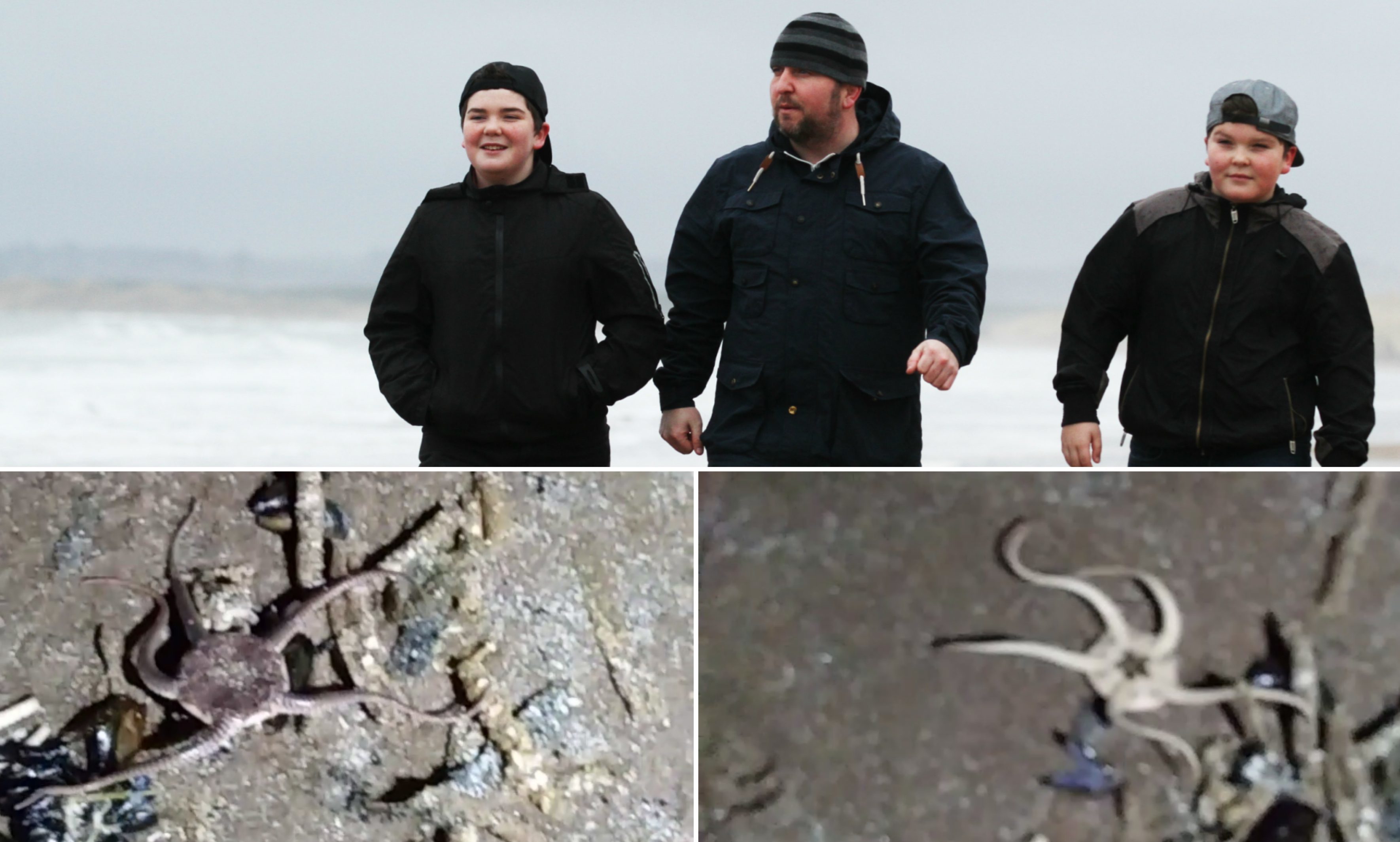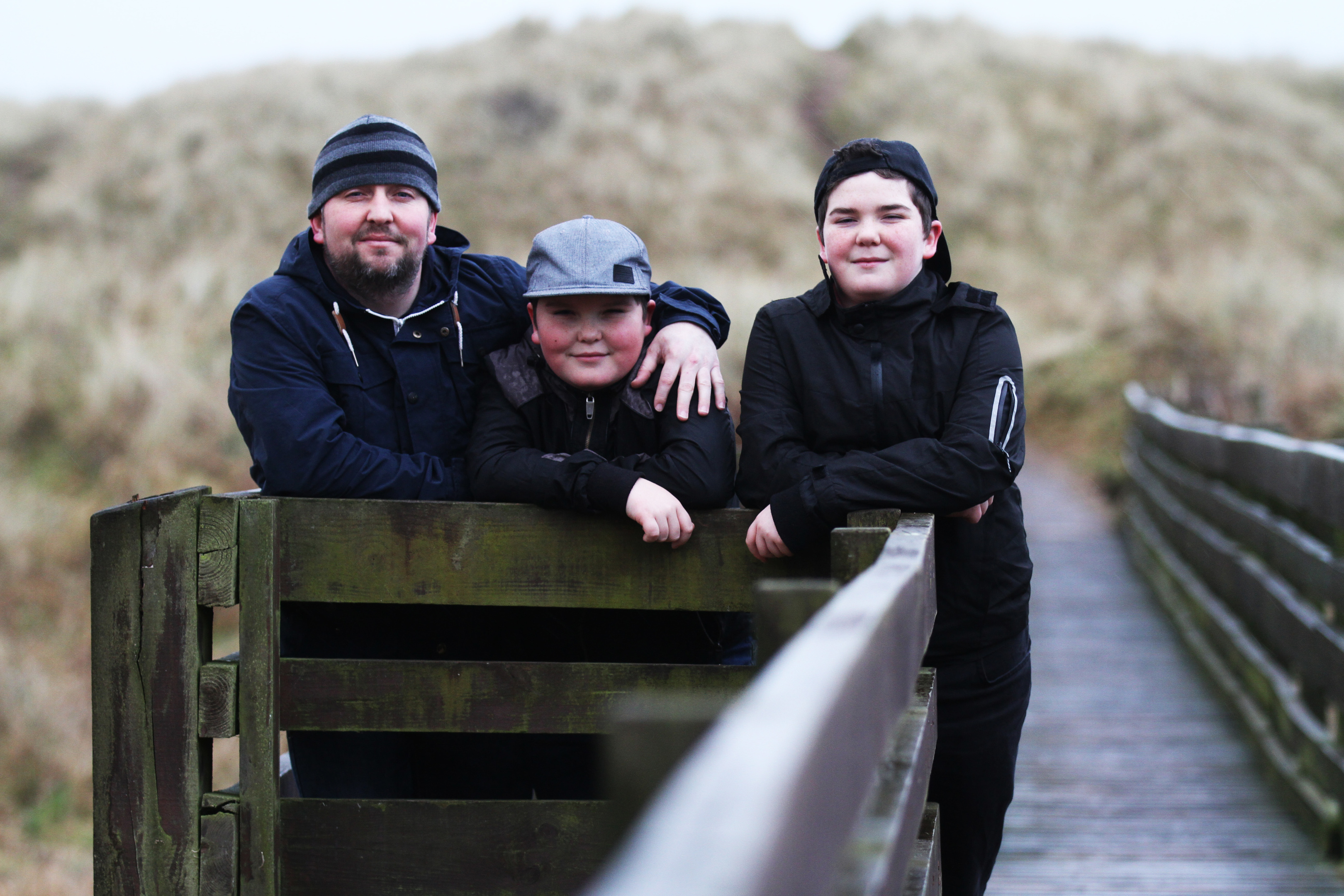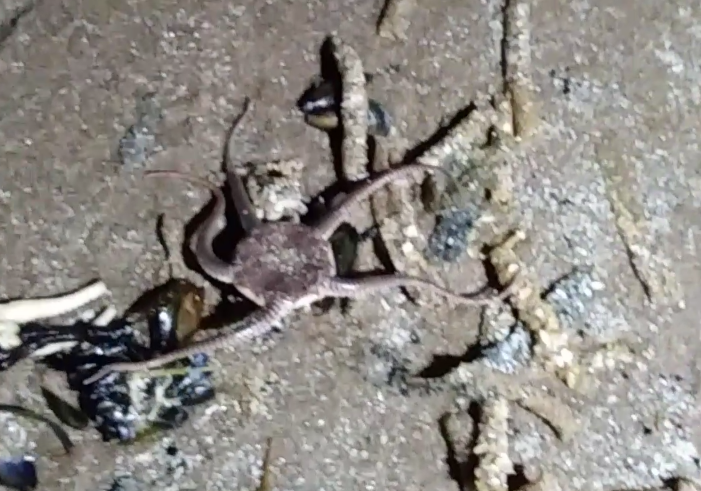An Angus family believe they have discovered brittle stars on the east coast of Scotland for the first time.
Coastal ecology experts are now studying a series of photographs taken by David Simpson from Hillside near Montrose.
The apparent discovery of thousands of the species on Montrose beach on Wednesday evening suggests the ecology around the coast is changing.
Common brittle stars — closely related to starfish — are commonly found off the coast of the British Isles although they are so far unrecorded on the east coast of Scotland.
They are usually found on all other coasts bordering the North Sea and throughout the eastern Atlantic Ocean, as far south as the Cape of Good Hope and the Azorean Islands.
David Simpson from Hillside was quad-biking on the beach with his sons Josh, 13, and Dylan, 11, when they happened upon what he believes were the creatures around 7pm.
Mr Simpson said they were scattered in one massive clump and he initially thought they were stones on the beach until they took a closer look.
“There were thousands of them and I’ve never seen anything like it before,” he said.
“Brittle stars aren’t found on the east coast.
“This suggests the ecology around the coast is changing.
“That’s a big change for these species to be here.
“It might also suggest that something that was eating them at sea has now stopped.
“That could be man-made but the ecological change could also be a good sign.”
Mr Simpson, who works as a falconer, said gulls feed up and down the beach and it is unlikely many will have survived.
“They have probably been eaten but there were thousands of them so you never know,” he said.
Brittle stars have a relatively small body and long arms.
They can have all kinds of colours and filter plankton out of the seawater using their roughly spined arms.
Common brittle stars are very sensitive to cold winters and their numbers can decrease strongly after a severe winter.
The arms are fragile and often broken but should they fall off they regenerate just like other starfish.












